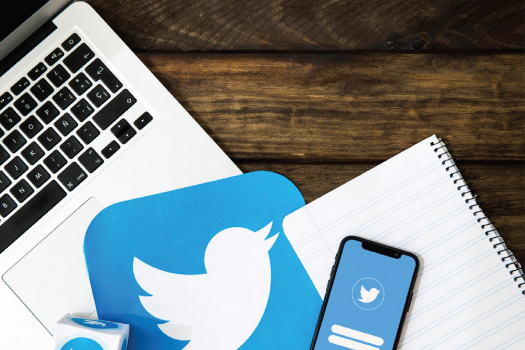Would you like to generate more leads, engage and retain your customers, and save time simultaneously? Then, you need to use marketing automation workflows.
It’s no wonder that automated messages drove over 29% of all email marketing orders in 2022. Workflows help to increase sales and engagement.
For example, a welcome automation workflow would be sent to new subscribers, whereas a cart abandonment workflow would be sent to visitors who added items to their cart and left without purchasing (something 85% of consumers did in 2022!).
In these instances, the recipients would need very different messages.
What is marketing automation workflow?
A marketing automation workflow is a series of automated actions that are executed based on predefined triggers and rules. It is designed to streamline and optimize marketing tasks.
These workflows can include sending emails, scoring leads, posting on social media, and more, all aimed at nurturing leads, engaging customers, and driving conversions.
By automating repetitive tasks, businesses can ensure consistent and personalized communication with their audience, improving efficiency and effectiveness in their marketing strategies.
An automated email workflow frees up your time, contacting your subscribers while allowing you to focus on other tasks with the help of marketing automation services.
What do you need to know about marketing automation workflows?

McKinsey research has even demonstrated a 40% revenue increase for companies that have mastered personalization.
Before you create your first marketing workflows, here are a few things that can help to improve their performance:
-
Segmentation: Segmenting your audience ensures you send the right message to the right person at the right time and allows you to create much more personalized campaigns. Instead of sending the same email to everyone, you can tailor your communication based on the recipients’:
- Location
- Demographics (e.g., age, gender, occupation)
- Browsing or purchasing history
- The amount of money they spend with you
- The likelihood of them unsubscribing from your list
- Automation Triggers: Once your marketing automation workflow has been created, the next question is, what will trigger it? Triggers will vary based on the workflows, such as:
-
Filling out the sign-up form, triggering the welcome email
-
Visiting a specific product page, triggering a product abandonment workflow
-
Adding an item to the cart and leaving, triggering a cart abandonment workflow
-
A/B Testing: Creating messages is only step one. Next, you need to check that they resonate with your audience. The best way to do this is A/B testing—having at least two communication versions running simultaneously and comparing results to learn which performs better. You can test several variables to see which drives the most open, click, or order rates, including the following for emails:
-
CTAs
-
Subject lines
-
Body Content
-
Personalization, such as mentioning the recipient’s name
-
SMS Campaigns: You could monitor open and click rates for SMS campaigns. It’s even possible to see which channels drove the highest overall amount of completed orders on your store pages. One option would be to send an email with an offer and follow up with an SMS if the recipient hasn’t opened it within two hours. Some brands use SMS to alert people to time-sensitive emails or push notifications to boost site traffic.
-
Communication Channels: The evidence is conclusive: using multiple channels in your marketing workflows increases sales. The increase is not small: marketers that used three or more channels in a campaign had an order rate 494% higher than those using single-channel campaigns, and incorporating push messages drove a 614% higher order rate.
Let’s break through your revenue hurdles
We find your primary growth blockers, build expert-led strategies, and provide custom data-driven solutions to help you hit your revenue goals.
How to create marketing automation workflows?
Marketing automation can seem daunting, but it's easier than you might think. Let's break down the key elements of an efficient marketing automation workflow to help you get started.
Triggers
A trigger is an action or event that prompts your technology to move to the next step in the workflow. Triggers are usually based on user actions or periods of inaction. For example, in ActiveCampaign, you can set up triggers like submitting a form, clicking a link in an email, making a purchase, and more.
Actions
Actions are what your marketing automation platform will do in response to a trigger. If the trigger is the "if," the action is the "then." For instance, if someone opens an email (the trigger), your system might send them a follow-up email (the action) 48 hours later.
Conditions
Conditions must be met for the system to complete the triggered action. For example, you might set up a workflow where the trigger is a customer making a purchase, and the action is to send them a discount code for their next purchase. However, this action will only occur if the initial purchase was $50 or more. Conditions ensure that actions are only triggered under the right circumstances and can also guide different paths for users based on whether conditions are met.
Time Controls
Time controls, or flow controls, determine exactly when an action is taken. Most automated marketing tasks happen on a delay, ranging from a few minutes to several days or weeks later. When building a marketing automation workflow for your sales funnel, remember:
-
The trigger tells your system that an action must be taken.
-
Conditions provide guardrails to ensure the action is appropriate for the contact and situation.
-
Time controls determine when the action is taken.
-
The action engages with the contact to deepen and continue the relationship.
Putting It All Together
What makes marketing automation workflows so powerful is that, after an action is taken, the user can set off a new trigger, starting the next step of their customer journey. This cycle of engagement leads to an improved customer experience, higher retention rates, and increased revenue.
By understanding and implementing triggers, actions, conditions, and time controls, you can create effective marketing automation workflows that streamline your email marketing automation efforts and enhance customer relationships. This approach ensures your strategies are optimized for success.
Top 10 marketing automation workflow examples

Let’s explore the following 10 growth marketing automation workflows for growth:
-
Welcome Automation Workflow
-
Trigger: Subscribe to or purchase a product/service
-
Description: A welcome email is the first message a new contact receives after signing up with you, and they have an average open rate of 30.69%—more than 202% higher than usual email campaigns. They can be individual messages or a series of messages, and we usually see a series of three emails generate better results.
-
Browse Abandonment Automation Workflow
-
Trigger: When browsers leave important pages
-
Description: Browse abandonment automation workflows help you to re-engage visitors who look around your website but leave without taking action. The goal is to return them to your site to recapture lost conversions.
-
Product Abandonment Automation Workflow
-
Trigger: When the visitor lands on a specific product page only
-
Description: A product abandonment workflow is similar to browsing abandonment emails but with one key difference: they’re sent to view only specific products. In comparison, a browse abandonment email is broader and more general.
-
Cart Abandonment Automation Workflow
-
Trigger: When visitors add a product to their cart but don’t finish the purchase
-
Description: Cart abandonment is one of the most popular marketing automation workflows. It’s also highly effective—using this workflow, Snatcher Online generated over $120,000 in under one year.
-
Order Confirmation Automation Workflow
-
Trigger: When visitors complete the transaction
-
Description: Order confirmation emails are among the most effective in terms of open and click-through rates. That’s largely because the person has made a purchase and is expecting the email, which typically includes details of the order and an estimated delivery date.
-
Shipping Confirmation Automation Workflow
-
Trigger: When the order has been shipped
-
Description: A shipping confirmation automation workflow is usually short, consisting of a single message informing a buyer that their order has shipped.
-
Upselling/Cross-Selling Automation Workflow
-
Trigger: Segmentation rules of customers based on purchase behavior
-
Description: Upselling is when you encourage a customer to buy a similar but higher-end version of a product they’re considering. Cross-selling is when the customer purchases something to complement their original item.
-
Product Review Marketing Automation Workflow
-
Trigger: Product purchase or another customer’s interaction with your store
-
Description: Reviews are powerful—they tell potential customers they can trust you and your products, which can help boost sales. Not all customers leave reviews; manually asking every buyer can be very time-consuming.
-
Birthday Marketing Automation Workflow
-
Trigger: The date that matches your subscribers’ birthdays
-
Description: Let your audience know you care by sending them a message on their birthday. These messages can be highly personalized—or at least, they should be if you’re following best practices.
-
Custom Automation Workflows
-
Trigger: Various triggers that your needs could customize
-
Description: The beauty of an automated email workflow is that it can be whatever you want. So, if you’ve looked at the previous nine examples and thought you have a scenario we haven’t covered, don’t worry—that’s where custom automation workflows come in.
How does Saffron Edge help in marketing automation?
SaffronEdge specializes in creating personalized marketing automation workflows to enhance your business's engagement and conversion rates.
By leveraging advanced segmentation, personalized communication, and multi-channel strategies, we ensure your messages reach the right audience at the right time.
Our team also conducts thorough A/B testing to optimize your campaigns and maximize results.
Partner with SaffronEdge to streamline your marketing efforts and drive sustainable growth through effective automation, highlighting the importance of marketing automation.
Get The Marketing Automation Toolkit
Related Blogs
We explore and publish the latest & most underrated content before it becomes a trend.
2 min read
How Content Marketing is Different From Inbound Marketing
By Praveen Kumar8 min read
How to Automate Your Sales Process: 11 Proven Strategies
By Sabah Noor
Subscribe to Saffron Edge Newsletter!

Get The Marketing Automation Toolkit










